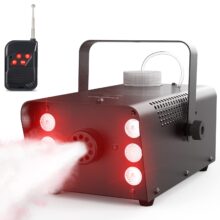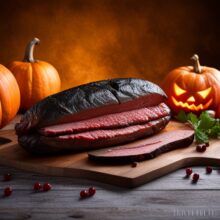Keeping Your Beef Jerky at the Right Smoking Temperature
The right smoking temperature will make your beef jerky chewy and flavorful. It will also prevent bacteria from growing, which can cause food poisoning.
To start, cut the beef round into 1/4-inch strips. Slice it against the grain to ensure a uniform texture and a chewy jerky.
Temperature of the Smoker
Smoking lean beef jerky creates a unique, subtle flavor. It also intensifies the meat’s richness and tenderness.
The temperature of the smoker plays an important role in the smoking process. A higher smoker temperature will allow the meat to cook faster, bringing it out of the “Danger Zone” more quickly.
Typically, the smoker is set to 160 degrees Fahrenheit (71 degrees Celsius) or higher, depending on the type of meat being smoked. The temperature should be checked regularly to make sure the pieces are not cooking unevenly.
A food thermometer is an excellent way to check the internal temperature of the jerky before it is removed from the smoker. It’s best to use a meat thermometer that has a sensor at the very last 1/8-inch of the probe’s decreased tip, such as a Thermapen.
Meat should be at an internal temperature of 140 degrees Fahrenheit before it can be eaten. If the meat is not heated to this temperature, it can linger in the “Danger Zone” and become contaminated with harmful bacteria and pathogens.
Smoking Time
The smoking time required to smoke beef jerky is determined by many factors. The surrounding temperature, the wood used and the amount of meat to be smoked all influence the cooking time.
Ideally, the smoker temperature should be just below 150 degrees F/65 C. Higher temperatures can result in drying out the jerky or overcooking the outside while retaining too much moisture inside the meat.
Once the smoker has reached the desired temperature, place the beef jerky strips on the grill grates. Close the lid, and allow the jerky to cook for about 2.5-3 hours.
When the jerky is done, it should shrunk in size, pick up a red color, and bend without breaking. It should also be chewy but not too tough to eat.
Meat Thermometer
One of the most important tools you need in your kitchen is a meat thermometer. It’s a great way to check the internal temperature of the meat and determine whether it’s still safe to eat or needs more time in the smoker.
A good quality meat thermometer can help you prevent food poisoning from eating undercooked or overcooked food. It also helps you ensure that your protein is cooked to the right temperature so it doesn’t lose texture and flavor.
If you are looking for a good quality meat thermometer, it’s important to select one that is easy to use and has a high level of accuracy. Read online reviews to get an idea of the kind of user-friendliness and accuracy levels that other people have found with this type of product.
Digital instant-read meat thermometers are easy to use and offer fast and accurate readings. They’re great for determining the temperature of large cuts of meat that you’ll be roasting or smoking. But make sure to follow the manufacturer’s usage and maintenance tips to avoid damaging your device.
Storage
The storage conditions of beef jerky impact its smoking temperature. For example, air can degrade jerky’s color and freshness by drying it out, while exposure to light accelerates the oxidation process.
These issues can negatively impact the flavor and quality of jerky. For this reason, it’s important to store beef jerky in an air-tight container.
This can be done with jars, aluminum foils, or other airtight containers. A vacuum sealer is also a great way to store jerky long-term, as it keeps out oxygen and moisture.
Cold smoke is a good option for jerky as it doesn’t raise the temperature above 140degF (60degC). This is the temperature that kills surface bacteria that can be present on raw meat.
Read more great BBQ articles at Bob's BBQ Tips



